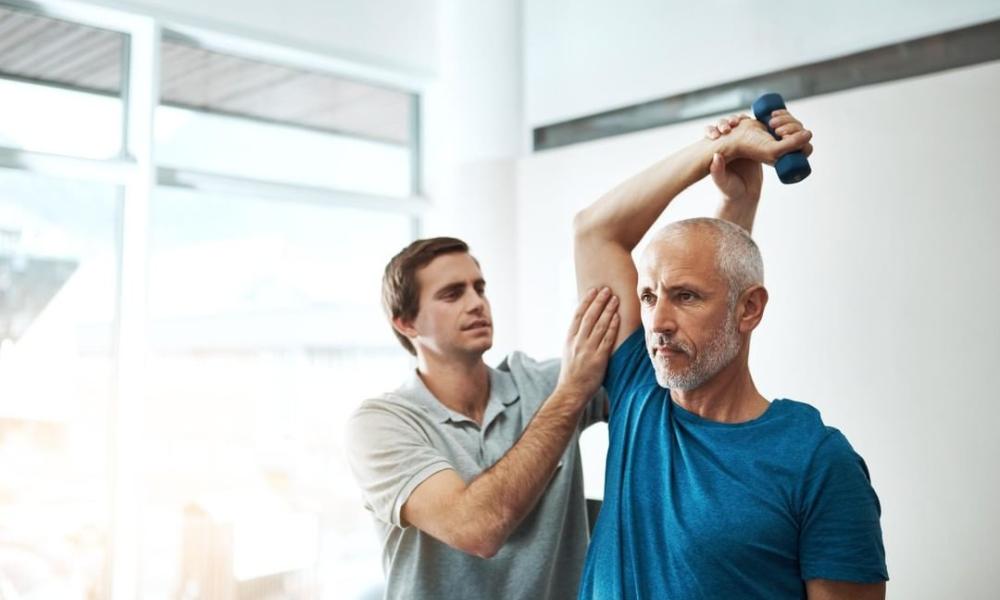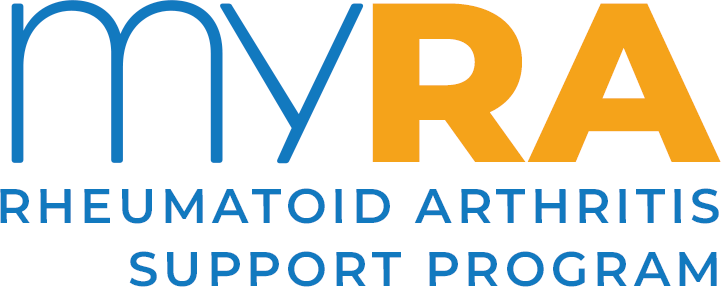
Physiotherapy is an important part of treatment for most people with rheumatoid arthritis (RA). Physiotherapists (or physios) are part of a team of healthcare professionals who help you to resume or maintain an active and independent life both at home and work. They’re experts in assessing movement and can show you how to protect your joints. Your physiotherapist will:
- offer advice and reassurance
- help you to feel confident about managing your condition
- address any concerns or uncertainties
- set appropriate goals to keep you as active as possible.
Your physiotherapist will start by asking you questions and examining the joint(s) you’re finding painful. This assessment will let them tailor the treatment to your needs.
Treatment may include:
- a programme of specific exercises
- general advice on increasing your activity level and avoiding exercise-related injuries
- pain-relief treatments such as heat or ice packs, TENS (transcutaneous electrical nerve stimulation) machines, massage, manipulation, acupuncture or taping
- providing walking aids or splints to help you stay mobile and independent.
How can physiotherapy help?
Understanding how arthritis affects you
A physiotherapist can help you to understand what happens to your joints and muscles when you have RA. Understanding your RA will help you to manage its effects.
Managing your pain
RA can cause pain in one particular part of the body or more widespread joint and muscle pain. Medications will help but a physiotherapist can tell you about other methods of pain relief that work alongside your medications. You’ll be able to continue with some of these treatments yourself between appointments:
- Ice packs can be used to soothe hot, swollen joints.
- Heat packs help to relax tense, tired muscles.
- Splinting of swollen or painful joints may be helpful, for example during a flare-up of RA. Your physiotherapist or an occupational therapist (OT) may provide temporary splints for you. Read more about splints.
- TENS (transcutaneous electrical nerve stimulation) works by blocking pain messages to your brain and altering your perception of pain. A TENS machine is a small electronic device that sends pulses to your nerve endings via pads placed on your skin. This causes a tingling sensation that you may find soothing.
Read more about managing your pain.
Learning how to pace yourself
Overdoing things can increase your pain, but so can not doing enough. Your physiotherapist can advise you on increasing your activity level at a rate you can cope with and on finding the right balance between rest and activity. Planning your activities so that you don’t overdo it will let you to enjoy the things you want to do.
Teaching you how to exercise safely
Keeping active is very important when you have arthritis. Many people are afraid that exercise will increase their pain or cause further damage to their joints, but your joints are designed to move and the muscles and tissues around them become weaker if they’re not used. This can reduce your mobility and independence, and make your day-to-day activities more difficult.
Regular exercise can:
- increase your general fitness and stamina
- help you to lose weight or keep to a healthy weight
- strengthen your muscles and joints
- improve your general mobility
- make you feel more self-confident.
- stimulate production of your body’s own natural pain-relieving hormones (endorphins).
Your physiotherapist will assess your muscle strength and the range of movement in your joints, and advise you about activities and exercises that will help keep your joints working as well as possible.
The important thing is to find a form of exercise you enjoy so you do it regularly. Think about this and discuss it with your physiotherapist – they can help you plan a programme if you’re new to exercise and advise on any special equipment or training that you’ll need to get started.
Some physiotherapists have access to a hydrotherapy pool where you can perform exercises in warm water. Many people find it easier to move in water – the warmth is soothing and the water supports your weight so that you can move your joints and muscles without straining them.
It’s important to start gently, pace yourself and gradually increase your activity. You may have a slight increase in pain when you first start, but this should improve as your confidence and strength increase.
Read more about exercise and hydrotherapy and arthritis.
Other treatments
- Electrotherapy using techniques such as ultrasound and low-level laser therapy can help to stimulate the healing process and therefore reduce pain.
- Manipulation can help to improve the range of movement in your joint. It’s not appropriate for every patient, but your physiotherapist will be able to advise whether it could be useful to you.
- Massage can help the muscles relax and make joint movement more comfortable.
- Acupuncture can stimulate the brain to produce endorphins. Some physiotherapists are trained to give acupuncture.
Where can I get more information?
The Australian Physiotherapy Association can offer further information about how physiotherapy can help you if you have arthritis.
How can I access physiotherapy services?
There are 2 routes you can take to see a physiotherapist:
- You can be referred by your GP or consultant to your local public hospital or community health physiotherapy department.
- You can see a private physiotherapist at your own cost without a referral. Use the Australian Physiotherapy Association website below to help you find a physiotherapist in your area, or ask your rheumatologist or rheumatology nurse for a recommendation.











